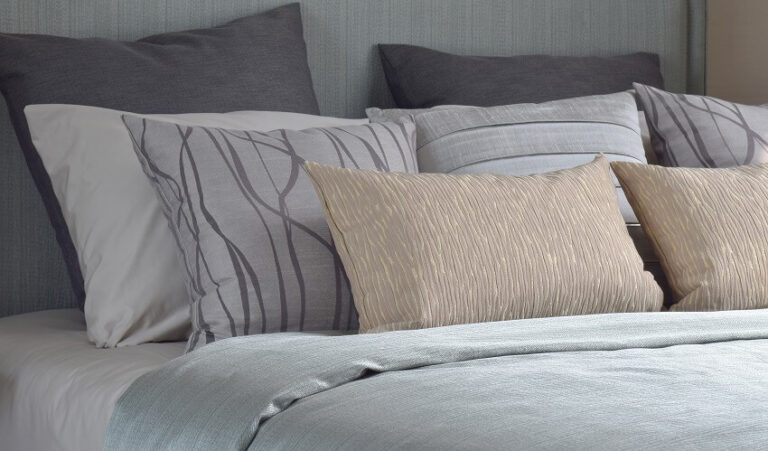Types of Pillow Fillings: Materials, Pros, and Cons
Having high-quality and complete sleep is an important part of living a healthy lifestyle. And to help you achieve that, you have to use the best pillow since it is an essential aid for getting a good night’s sleep. Purchasing a high-quality pillow depends on various factors, including the type of pillow filling, the volume of stuffing, and your budget.
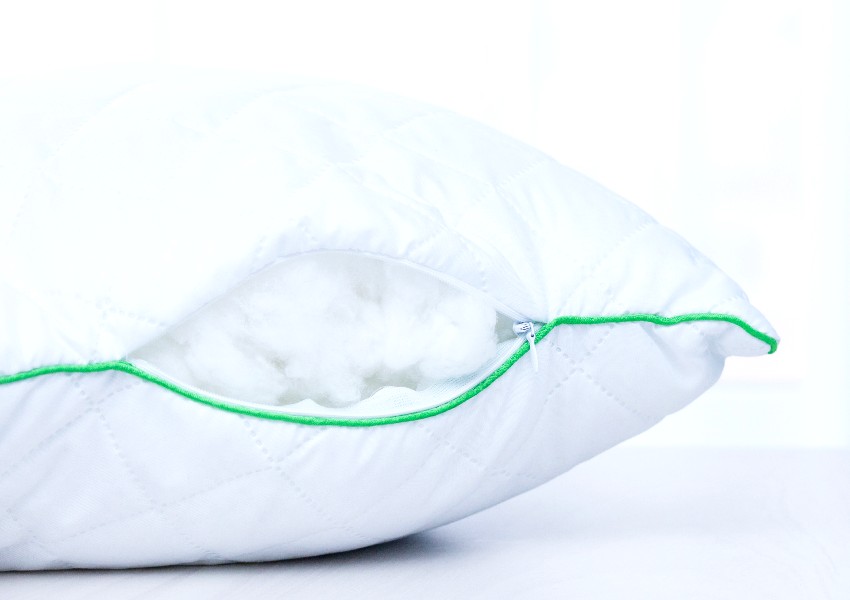
Although most pillow fillings are comforting for many people, some can be a nuisance for others. With so many options available today, deciding on the type of pillow filling can be difficult. Thankfully, our article will walk you through the various types of pillow fillings and their benefits, drawbacks, and other factors to assist you in selecting which one is best for you.
What Is Filling for Pillows?
Pillow filling is the cushioning that is inserted inside the pillow casing in order to provide maximum comfort. The pillow filling materials are the most essential part of the pillow.
They help determine the fabric that should be used for the pillow casing. Although the casing is typically made of cotton or cotton-polyester, the weight and proximity of the weave vary depending on the filling.
The material that is used for the pillow filling will impact the density of the pillow. A pillow filled entirely with fabric would be heavy and thick, while a pillow filled with small foam portions that came from a foam mattress cushioning will be lightweight and squishy.
Anyhow, the pillow filling must be extremely comfortable and is made according to the user’s needs and preferences. It should not be too overstuffed or under-stuffed. Check out our types of cushions guide here.
Types of Pillow Fillers (Pros And Cons)
This list of the different types of pillow fillings will enable you to choose the one that best suits your specifications and preferences even if you have not tried all the various types of pillows yet. Pillow filling is also significant since it helps determine the level of comfort for individuals with varying needs.
If you sweat a lot while sleeping, for instance, you will need a pillow filling with excellent cooling systems. Aside from that, pillow filling is useful for different sleeping positions and many other factors.
Here are the different types of pillow fillings:
Latex Filling
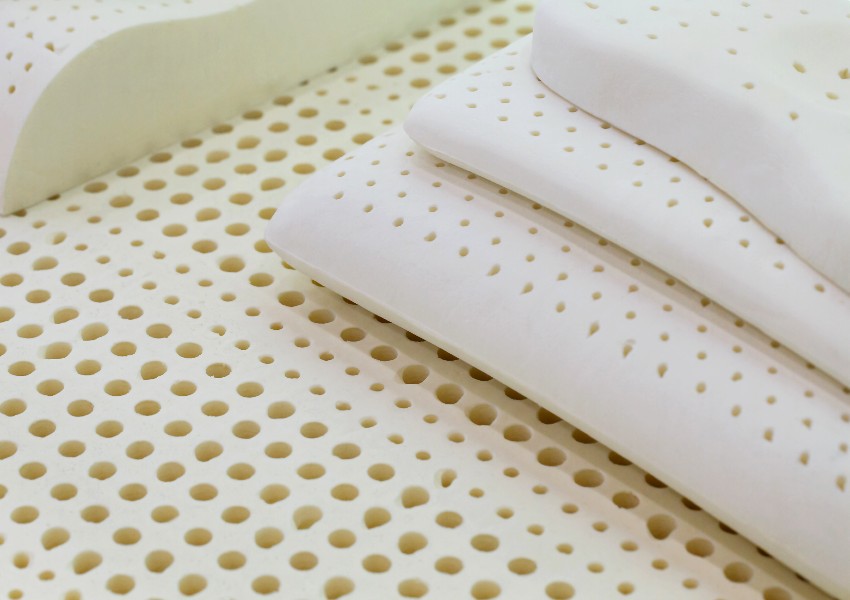
Latex filling pillows are very popular, but they are also very expensive, particularly if they are made out of pure or natural latex. Latex is difficult to extract, and the most popular choice includes more breathable types of latex.
Latex foam, like memory foam, comes in a block or shredded form, making the pillow easy to customize to your specific needs. They provide incredible support irrespective of your sleeping position and will reduce headaches while providing the coolest and most comfortable night’s sleep possible.
Shredded latex is a better option if you want something more adjustable and moldable. It also makes the pillow more snuggly and softer, allowing you to sleep delicately.
Additionally, latex is a more vegan-friendly choice, particularly if it is 100% organic and shredded. Natural latex is also more breathable than synthetic pillow fillings.
Many latex pillows have an open-cell design, which allows air to circulate more freely and prevents you from becoming fully awake as well as turning around.
Latex pillows, on the other hand, can be quite expensive, making them unsuitable for those on a tight budget.
Pros of Latex Pillow Filling:
• When compared to other types, latex pillow filling is more environmentally friendly.
• Organic and natural products are preferred, but synthetic alternatives are available as well.
• It is more breathable due to the open-cell design.
• It has a soft and luxurious feel to it while also being soft and cuddly.
Cons of Latex Pillow Filling:
• Because some people believe that latex pillow filling is too soft, it may not always be the greatest choice for side sleepers.
• These pillow fillings are quite costly, and for that price, you can quickly get two pillows of a different type that provide nearly as much relaxation.
Feather
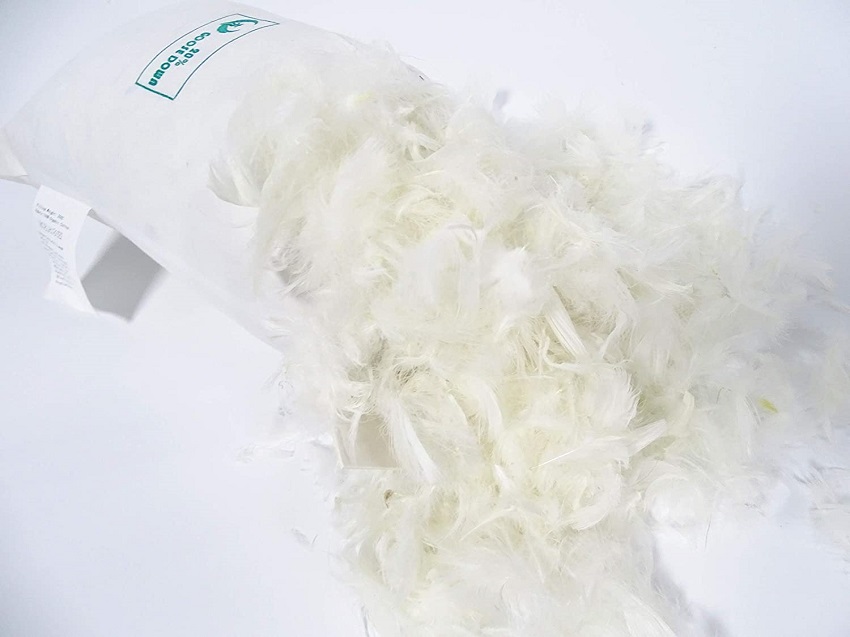
If you are on a limited budget and need a simple solution, be informed that feather pillow fillings are abundantly available on the market and are reasonably priced. They are, nevertheless, far from the best option.
Feathers fade too quickly, leaving the cushion saggy or deteriorated. Furthermore, after a while, the feathers start to fall out, causing a mess in your bedrooms.
They were once a popular choice when other materials were much more pricey than they are now. The reduction of the loft as well as the consistent need for fluffing, on the other hand, induced demand for down pillows and other materials like memory foam.
Soft feathers from the wings and backs of birds are used to stuff feather pillows. Some more expensive feather fillings entail bunches of down to enhance durability, but the effect is far from that of genuine down pillows.
Furthermore, because they are less expensive than other options, it is improbable that you will find an adjustable alternative.
Pros of Feather Pillow Filling:
• Feather fillings, like down stuffing, are lightweight.
• They are easy to mold and shape to your liking, making them cuddly.
• They are less expensive than down alternatives.
Cons of Feather Cushion Filling:
• There is insufficient support and heating.
• They are less long-lasting than down pillow fillings.
• Feather pillows are difficult to clean and maintain, and they frequently emit an unpleasant odor after a few years of use.
Down

Down is the under-coating of the feathers on a bird’s chest and underbelly. As opposed to other pillow fillings, these down fibers are naturally white.
Down is one of the cuddliest and softest layers of the feather, and it makes an excellent filling for bed pillows, bed toppers, mattress cushions, and other types of bedding. Natural down is far superior to synthetic down and far more long-lasting than other cushion filling options.
Many people often confuse down pillows with ordinary feather filling, but they are not the same thing. When compared to feathers, the Down layer is fluffier.
Furthermore, the filling is bulkier and larger than ordinary feathers. It is critical to select pure down feathers rather than a combination of two as this does not produce the same excellent effect.
Normally, you will not always be lucky enough to find a pillow that is 100% down. Nevertheless, the best down-feather ratio should be 75% down to 25% feathers.
Pros of Down Pillow Filling:
• Down pillows are lighter and henceforth more comfortable.
• If properly cared for, they have a life expectancy of approximately over 15 years.
• The cushion has a luxurious vibe to it and is pliable enough to fit your needs.
• Provide sufficient temperature regulation.
• Down works great with throw pillows especially when mixed with feathers to avoid being re-poofed.
Cons of Down Pillow Filling:
• Even though down cushion fillings regulate temperature effectively, they can still accumulate a lot of heat during the summer months.
• Because they are quite pricey, they might not be the best solution for everyone, particularly those who have tight budgets.
Cotton
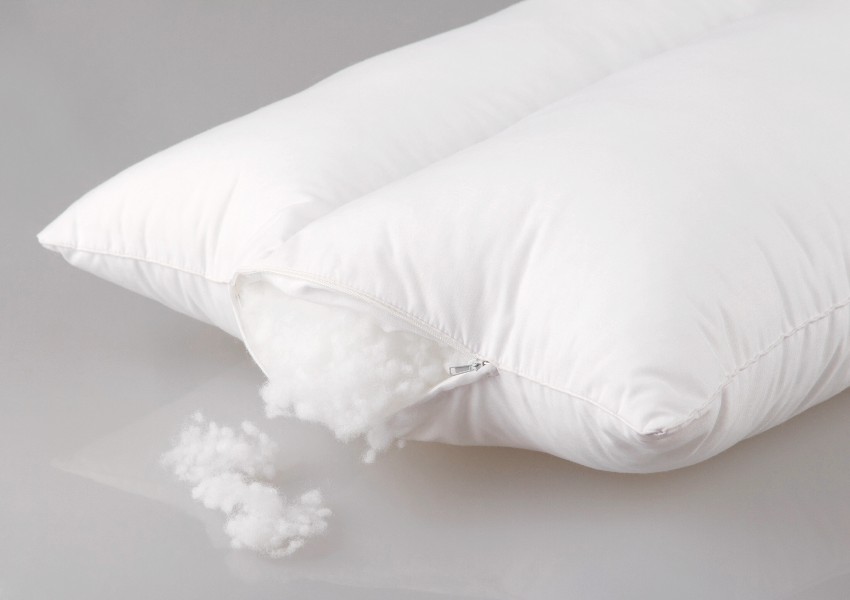
There is quite a reason why most beddings are made of cotton, even though it is not always a noticeable material. It is widely available, specifically in 100% natural and organic shapes. This also makes it a vegan and ecologically friendly selection.
Generally, though, all cotton pillows are firmer than those filled with wool, which are characterized by more of a bouncy loft. – Knack Green Decorating & Remodeling, Heather Paper
Nevertheless, it is sometimes found in conjunction with shredded memory foam and polyester, which offers contouring innovation to its function. It is indeed soft, gentle, and comfortable to lay on. It is very comfortable to sleep with as well.
Moreover, cotton is hypoallergenic and sustainably sourced, ensuring that you and your family will not have to worry about pathogens, mold, dust mites, or bacteria. It is a more popular option than polyester fiberfill, but it is infrequently used on its own.
Cotton is very breathable, making it an excellent temperature regulator. There will be no trapped heat or waking up in the middle of the night with sweat on your body or the back of your head. It is intended to improve your nighttime sleep and keep you from waking up several times per night.
Pros of Cotton Pillow Filling:
• Cotton is one of the most environmentally friendly cushion filling materials.
• It is all-natural and organic, making it vegan-friendly.
• Provides an excellent temperature regulator with no sweating.
• Snuggly, silky, and cozy to sleep on.
• Excellent for allergy sufferers.
Cons of Cotton Pillow Filling:
• The filling will sometimes lump together, causing the cushion to sink in.
• Every now and then, you may need to replace the filling.
Polyester Fiberfill

Polyester fiberfill is made up of small, curled polyester fibers that are man-made. It is among the most widely known types of stuffing because it is soft, durable, and exceptionally snuggly. This pillow filling is one of the best outdoor pillow stuffing selections as well.
Apart from the term “polyester fiberfill”, this type of filling is also recognized as polyfill, poly-fil or a down alternative. Individuals who enjoy the filling of down stuffing are usually vegans, and those who prefer a less expensive down-like option refer to it as a down alternative.
Poly-fil cushion stuffing is less pricey and is suitable for a wide range of pillows. It is also fairly adjustable.
Despite the synthetic material’s persistent incapability to be machine-washed, polyester fiberfill options greatly simplify cleaning and usage in a variety of applications.
Meanwhile, because of their increased maintenance, the quality of polyfill deteriorates quickly. They will quickly lose their shape as well as the comfort they had when purchased and will necessitate fluffing.
Pros of Polyester Fiberfill:
• The cushion stuffing offers excellent value for money and is more suitable for vegans.
• Polyfill is hypoallergenic, which means that people who are allergic to feathers and down will not be bothered by it.
• There are low-cost options.
• Unlike down pillows, they are simple to clean and maintain.
Cons of Polyester Fiberfill:
• Some polyester fiberfill versions lose their original shape and must be re-fluffed constantly.
• It has the potential to sag and lose its firmness, which is undesirable for back and side sleepers.
Memory Foam Pillow Stuffing
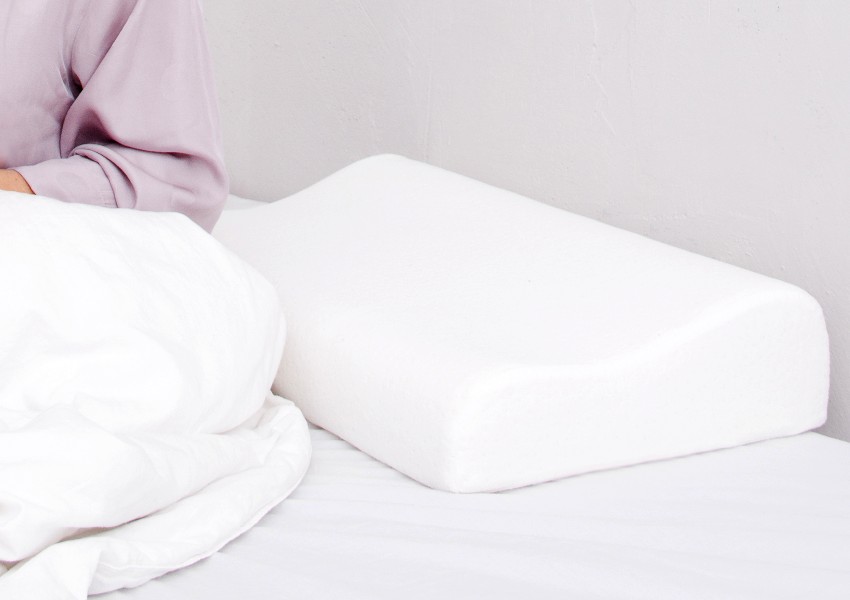
Memory foam is indeed the most commonly used cushion filling material. It comes in two varieties: block memory foam and shredded memory foam.
The block foam is simply encased in a pillowcase before being transported as a product. Shredded memory foam, on the flip side, is more adjustable, provides a better sculpting experience, and is ultimately more comfortable and fluffy.
Polyurethane and other synthetic compounds are used to make memory foam pillows. And it is pressure- and heat-activated, thus when you lay your head down in bed, the sculpting and cuddling technology hits in, conforming to the contour of your head and allowing you to feel optimally comfortable and totally relaxed.
They can, nonetheless, capsize from time to time. That is why shredded memory foam is preferable since it allows you to modify the firmness as well as the width of the cushion.
Furthermore, if there is no gel-infused foam, the memory foam stuffing might cause an unpleasant odor affiliated with the off-gassing process as well as an uncomfortable and hot night.
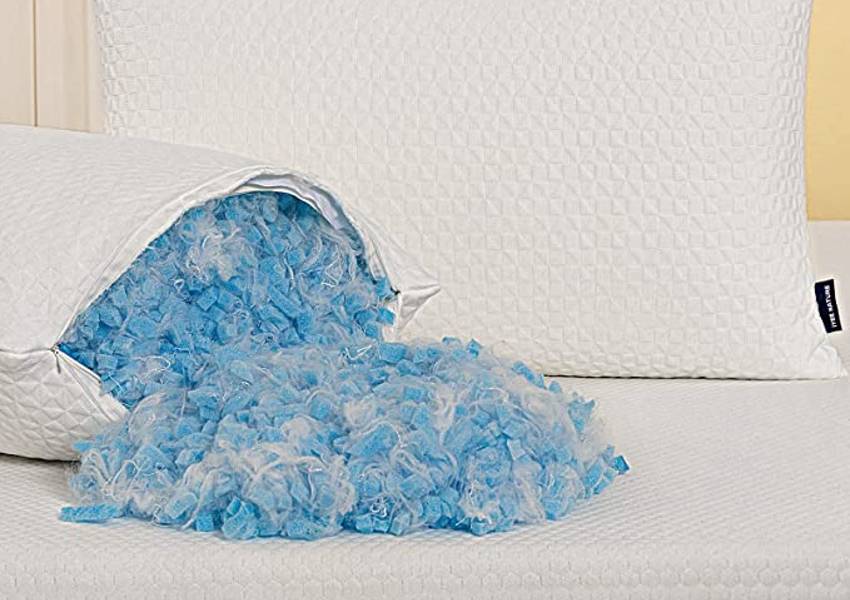
Pros of Memory Foam Stuffing:
• Memory foam offers incredible pressure comfort and relief.
• To maximize comfort, it conforms to the shape of your head and neck.
• When compared to other pillow stuffing, it is less susceptible to sinking.
• It provides excellent support irrespective of your sleeping position.
Cons of Memory Foam Stuffing:
• The foul smells that result from the volatile materials off-gassing turn off a lot of people.
• Some people are turned off by the use of an artificial pillow material
• Their main downside is that they heat up easily, which causes hot flashes and nighttime sweating. It occasionally sinks too.
Wool
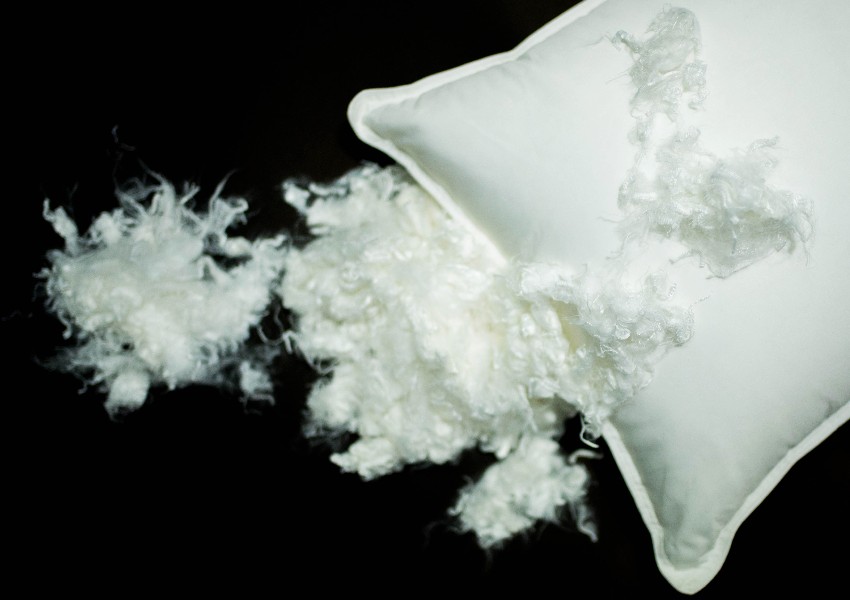
Wool stuffing for pillows is a popular choice due to its breathability as well as insulating features. Wool is a synthetic fiber that is warm, gentle, and snuggly. They are an excellent choice for allergy sufferers and can provide superb relaxation in both the summer and winter months.
The wool pillow will keep you warm in the winter and cool in the summer. This is usually priced in the midrange and happens to come with additional materials to enhance comfort and feel. It can be observed in various types of pillows and provides excellent cushioning, especially during the wintertime.
Accordingly, because it is a breathable material, this will keep you cool and give you a restful night’s sleep in the warmer months. Meanwhile, it is not commonly available in the market. Wool tends to become lumpy and saggy over time, which is not ideal for long-term durability.
Pros of Wool Pillow Filling:
• Wool is an excellent winter insulation.
• It is breathable and refreshing, making it ideal for hot and sweaty nights.
• It is hypoallergenic by nature.
• There are no toxic or volatile substances.
Cons of Wool Pillow Filling:
• Since wool is not the most bendable material, you will probably be unable to shape it easily unless it is combined with something else that is moldable.
• It is not vegan-friendly and has a tendency to sag over a period.
Buckwheat

Buckwheat pillows have become exceptionally widely known in recent decades. They are made from buckwheat hull shells. The pillows originated in Japan, where they were well-known for a long period. One pillow can typically weigh up to 10 to 12 pounds of buckwheat hulls.
Buckwheat is an excellent temperature regulator, making it a highly regarded choice for people who sleep warm and sweaty and do not want to utilize down pillow fillings or memory foam.
The buckwheat filling also shapes naturally to the sleeper’s head, allowing them to sleep soundly. They are very firm, thick, and evenly distributed, but maybe not as cuddly as the other premium options on this list.
One other thing we like so much about buckwheat is its durability; it can last for many years, if not decades.
They are, nevertheless, less prevalent in the marketplace because there are more affordable alternatives available.
Another disadvantage of using this type of pillow filling is that it is heavy and can make strange noises as it collides and moves inside the pillow shell. If you are a light sleeper, this can cause discomfort and difficulty falling asleep.
Because they are less soft and cuddly than other choices, they could be too firm for certain sleepers and trigger irritation for others.
Pros of Buckwheat Pillow Filling:
• Buckwheat pillow fillings are indeed long-lasting, lasting several decades or even a lifetime.
• The hulls are arranged in such a way that there is more breathing room.
• Regarding comfort, there is a great deal of support.
• They are perfect for individuals who prefer a lot of firmness.
Cons of Buckwheat Pillow Filling:
• One of the major downsides of buckwheat pillow fillings that deters many light sleepers is the noise it creates.
• They don’t have good softness, and might also be too firm to sleep on, particularly given their weight in comparison to other choices.
Bamboo
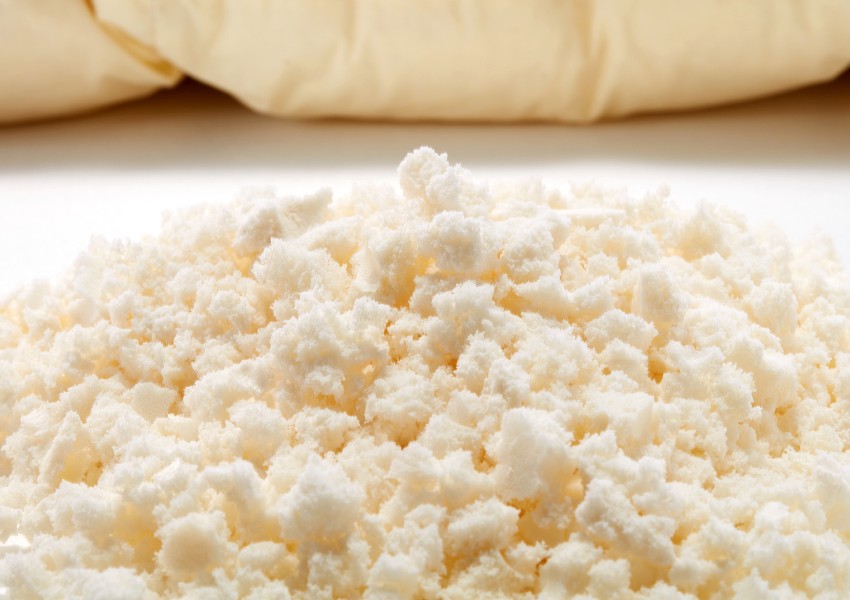
Bamboo pillow filling has recently become popular for a variety of reasons. They are very environmentally friendly because they are natural and devoid of artificial chemicals. Medical professionals also recommend this material for people who suffer from allergies.
Fungal and bacterial growth are possible, particularly in damp environments and as a consequence of moisture that comes from human sweat.
Fortunately, this is not the case with bamboo pillows, which are impervious to these microorganisms. It also works well at deterring odors that accumulate over time.
This pillow filling is softer than many other materials such as wool. The main disadvantage of this material is its high cost. It is also slightly heavy due to the manufacturing process, which includes the transition of bamboo stalks.
Pros of Bamboo Pillow Filling:
• Bamboo pillow filings are temperature-regulating.
• They inhibit organism development.
• They are decently soft, natural, and environmentally friendly.
Cons of Bamboo Pillow Filling:
• After some time, bamboo pillow fillings emit a foul odor.
• They are heavy and costly.
Gel
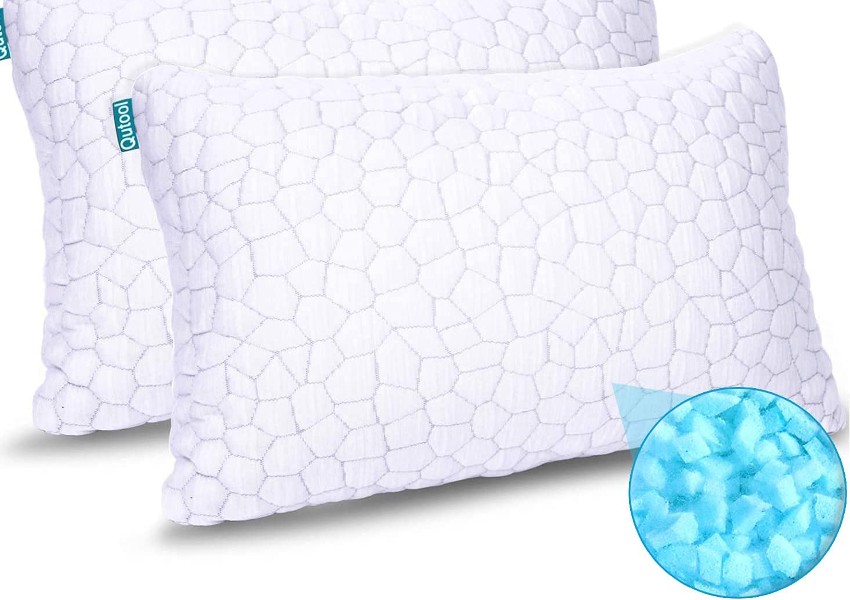
Gel pillow filling combines gel microbeads with other components such as memory foam and latex to create an extra layer of comfort. This material is usually smooth, but the quantity of gel used determines the level of smoothness. Even so, experts recommend around 30% for maximum comfort.
Furthermore, they are popular for their extreme calmness. This is because it allows air circulation, which aids the pillow in temperature regulation.
It also retains its shape for an extended duration and can be used by a wide range of sleepers. The level of comfort is incredible, and they can aid with sleeplessness caused by heat.
Nevertheless, they might be less durable than pillows made entirely of memory foam since the gel encourages quicker degradation. Gel pillow filling is also fairly expensive due to its composition of various materials. Not to mention the environmental impacts of foams.
Pros of Gel Pillow Filling:
• Gel cushion fillings keep you cool while also improving airflow.
• They keep the cushion temperature regulated.
• They are comfortable and maintain their shape for a long period.
Cons of Gel Pillow Filling:
• Gel pillow fillings are not that durable.
• They are relatively expensive and not that eco-friendly.
Hemp
Hemp is a natural cushion filling made from fast-growing plants that necessitate little to no upkeep. This crop develops with very few chemicals and contains entirely useful components. Therefore, this could be one of the most environmentally friendly head cushion filling materials available.
Hemp, like cotton, is a pleasant and soft filling. It is breathable as well, enabling air to pass through while keeping a pleasant temperature.
This material is moldable and resistant to mold and pest growth. If you value organic and natural products, hemp would be an ideal choice.
Pros of Hemp Pillow Filling:
• Hemp pillows are soft, bendable, and breathable.
• They are natural and environmentally friendly.
• They are mildew-resistant.
Cons of Hemp Cushion Filling:
• Some portions of the cushion filling can be rough.
• It can be illegal to use in some countries or cities.
Kapok

Ceiba pendandra, a tropical tree native to Mexico, is another name for Kapok filling. They are employed for a wide range of purposes but are most commonly found in pillows. They are fluffy because they are similar to cotton stuffing.
Since it is soft and smooth, Kapok cushion makers frequently draw attention to this wonderful and pliable material as silk cotton. Numerous different seeds can be combined into a single cushion stuffing. This would be the ideal route if you do not want to use polyester or down for your bolster filling.
Kapok is 100% real and natural, making it ideal for those searching for organic options. Furthermore, because there are no toxic materials, this is ideal for individuals who have allergies. Finally, those who prefer a soft and plush sleeping area could sleep much better.
One disadvantage is that it is susceptible to lumps. A more concerning disadvantage is that Kapok material is flammable, so it should not be kept near a fire.
Finally, despite being quite soft and cuddly, they are not as malleable as other types of pillows. Nonetheless, they are ideal for all sleepers.
Pros of Kapok Pillow Filling:
• Kapok filling is organic with no toxic or volatile chemical compounds.
• This bolster filling is eco-friendly and vegan-friendly.
• It is quite soft, pillowy, and cuddly.
Cons of Kapok Filling:
• Because Kapok pillows are not that moldable, it is difficult to keep them in their original form.
• They pose a fire risk.
Microbeads

This is an additional synthetic material that is not widely available on the market. It is a less expensive but suitable substitute for the buckwheat head cushion filling that is previously stated.
Luckily, they are more breathable since the microbeads within the cushion allow for better air circulation. In addition, they are a malleable alternative to many other options.
Even so, the negative outweighs the positive. They are not environmentally friendly, and they tend to become lumpy before flattening out.
Nonetheless, if you want a breathable bolster with a buckwheat-like feel, this might be a decent option to consider.
Pros of Microbead Filling:
• The feel of buckwheat can be imitated by microbeads.
• They are less expensive than other options.
• They are breathable, so you will not perspire during bedtime.
Cons of Microbead Stuffing:
• Microbeads can be made from sketchy materials and emit off-gassing.
• They are not particularly long-lasting, hence the head cushion may flatten out over a period.
What Type of Filling For Pillows Is Best?
A latex bolster stuffing might be considered the best cushion filling if you are searching for extraordinarily comfortable, high-quality stuffing. Because latex filling is buoyant and contouring, it is excellent for soothing head and neck pain.
In addition, a latex filler has a good temperature regulation and is highly hypoallergenic, making it an excellent choice for those who have a hard time sleeping on a hot night or have allergies. If thoroughly maintained, latex pillows are capable of lasting for more than 10 years.
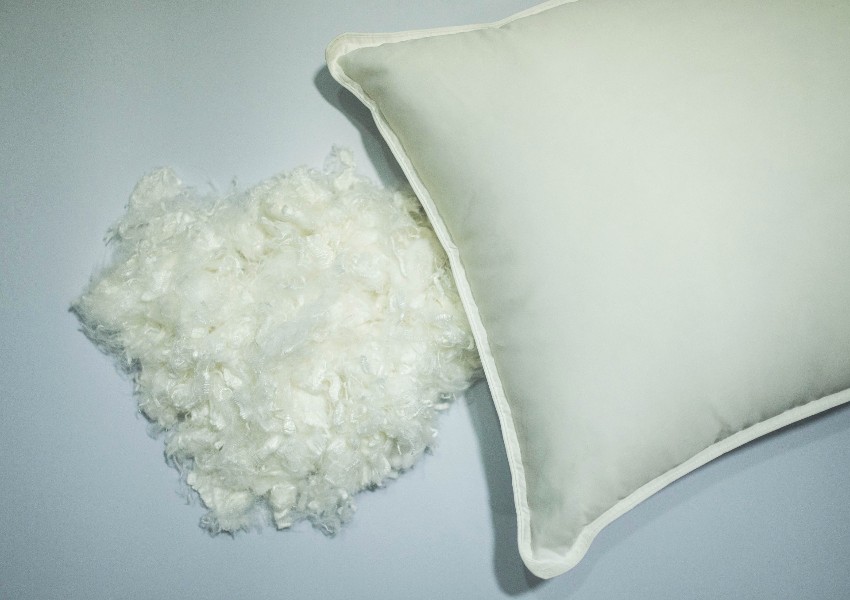
What Filling Is Most Comfortable?
Latex and cotton are among the softest, most comfortable, and most adjustable cushion-filling options. If you are not bothered by noise, buckwheat stuffing can also be an extremely comfortable head cushion filling.
What Filling Do Hotels Use?
There are several types of fillers for pillows available on the market for use in hotel pillows. Down and synthetic down pillows are the two most popular types of filling you will encounter. This is because down is widely regarded as the most comfortable head cushion filling available.
However, feather pillows are also common in the hotel industry. You may even find them mixed with a ratio of 50% down and 50% feather or some other amount between the two.
What Is the Healthiest Filling?

Head cushion stuffing made of wool and cotton is typically the healthiest options. If you want to use firm and solid pillows, all you have to do is choose 100% natural wool or cotton pillow fillers.
Wool and cotton pillows are hypoallergenic and resistant to dust mites, mold, and bacteria, hence you will not have to fret about having rashes, itchiness, or breathing difficulties.
For more ideas about pillows, check out our article about the most popular types of pillow cases.



